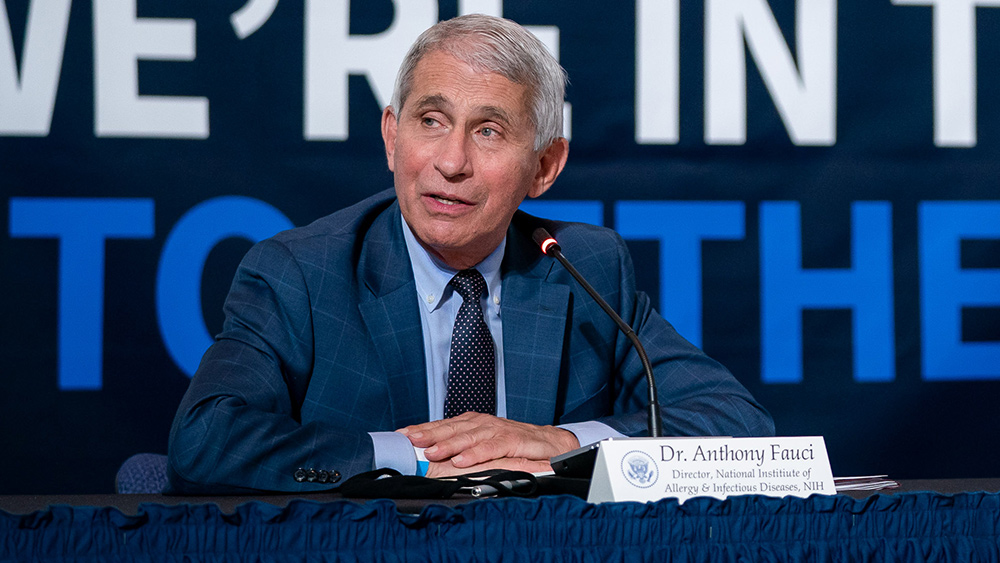AMA: Big Pharma should stop selling drugs Americans don’t need!
11/23/2015 / By Julie Wilson

In a shocking move, the American Medical Association (AMA) has called for a COMPLETE BAN on direct-to-consumer advertising for prescription drugs and implantable medical devices. AMA, the largest group of physicians and medical students in the U.S., says that Big Pharma’s incessant TV advertising leads to rising medical costs for patients and results in inappropriate treatment, reported the San Francisco Gate.[1]
The United States and New Zealand are the only countries that allow direct-to-consumer drug advertising.
The medical group voiced their demand earlier this week following a vote in Atlanta during a policymaking meeting aimed at making prescription drugs more affordable to those who need them.
Americans spending more money on drugs, only to become sicker and sicker
“Today’s vote in support of an advertising ban reflects concerns among physicians about the negative impact of commercially driven promotions and the role that marketing costs play in fueling escalating drug prices,” said AMA board member Dr. Patrice Harris.
The AMA hopes their policy change will influence pharma to limit or do away with consumer drug advertising, as the Food and Drug Administration and Congress are the only entities with the power to ban it altogether.
Intent on maintaining or increasing their profit margins, Big Pharma insists their ads help patients make better decisions about which drugs to take. But the truth is, their interest isn’t public health, but profit. Pharma companies routinely advertise off-label uses for drugs not because their safety is approved, but because they want to make money.

AMA joins list of medical groups calling for ban on pharma TV ads
The majority of pharmaceutical companies’ spending is largely allocated towards advertising, instead of research and development. For example, Anglo-Swedish pharmaceutical company AstraZeneca spent about a billion dollars promoting a statin it released in 2003, according to Jack Law, author of Big Pharma: Exposing the Global Healthcare Agenda.[2]
To learn how much funding your doctors have received from Big Pharma, visit Dollars for Docs and search for their name and the state where they practice.
Big Pharma spent $4.5 billion on consumer advertising last year, a 30 percent increase from 2012, reports SF Gate, highlighting just how powerful and rich the pharmaceutical industry is. The industry’s total earnings for 2014 are estimated to be around $1 trillion, Law reports.
The World Health Organization, the National Center for Health Research and other groups have also called for bans on direct-to-consumer advertising for pharma drugs and devices, which also tend to pressure doctors to prescribe drugs patients often ask for. This encourages doctors to dole out drugs to patients they normally wouldn’t have, slowly eroding imperative discretion by physicians.
Drug companies spent $3.2 billion on TV ads last year
Following the AMA’s newly adopted policy, the group plans to kick-start a campaign lobbying for more “drug affordability by demanding choice and competition in the pharmaceutical industry.”
SF Gate reports:
“The association said it was responding to ‘deepened concerns’ that anti-competitive behavior in a consolidated pharmaceutical marketplace has the potential to increase drug prices. The group said it would monitor pharmaceutical mergers and acquisitions, as well as the impact of such actions on drug prices.
“According to Nielsen, drug makers spent nearly $20 billion over the past five years to advertise drugs to consumers. The biggest share of the ad money last year was spent on television ($3.2 billion), followed by magazines ($1.2 billion), newspapers ($127 million), radio ($26 million) and billboards ($4 million).
“Of the top 10 advertised drugs, two are for erectile dysfunction (Cialis and Viagra), three are for arthritis (Xeljanz, Humira and Celebrex), two are for mental health issues (Latuda and Abilify), and one each is for stroke prevention (Eliquis), fibromyalgia (Lyrica) and diabetes (also Lyrica).”
Sources:
[1] SFGate.com
[2] Medicine.news
Submit a correction >>
Tagged Under:
Big Pharma, Consumer advertising, Drug spending, Pharmaceutical companies, Prescription drugs, TV ads, WHO
This article may contain statements that reflect the opinion of the author





















